Disconnect the DevKit from your computer, if it is connected.
By default, this sample creates an S2 IoT Hub after it creates one IoT Remote Monitoring solution accelerator. If this IoT hub is not used with massive number of devices, we highly recommend you downgrade it from S2 to S1, and delete the IoT Remote Monitoring solution accelerator so the related IoT Hub can also be deleted, when you no longer need it.
The DevKit reboots and starts running the code.
Now that you have learned how to connect a DevKit device to your Azure IoT Remote Monitoring solution accelerator and visualize the sensor data, here are the suggested next steps:
When the sample app runs, DevKit sends sensor data over Wi-Fi to your Azure IoT Remote Monitoring solution accelerator. To see the result, follow these steps:
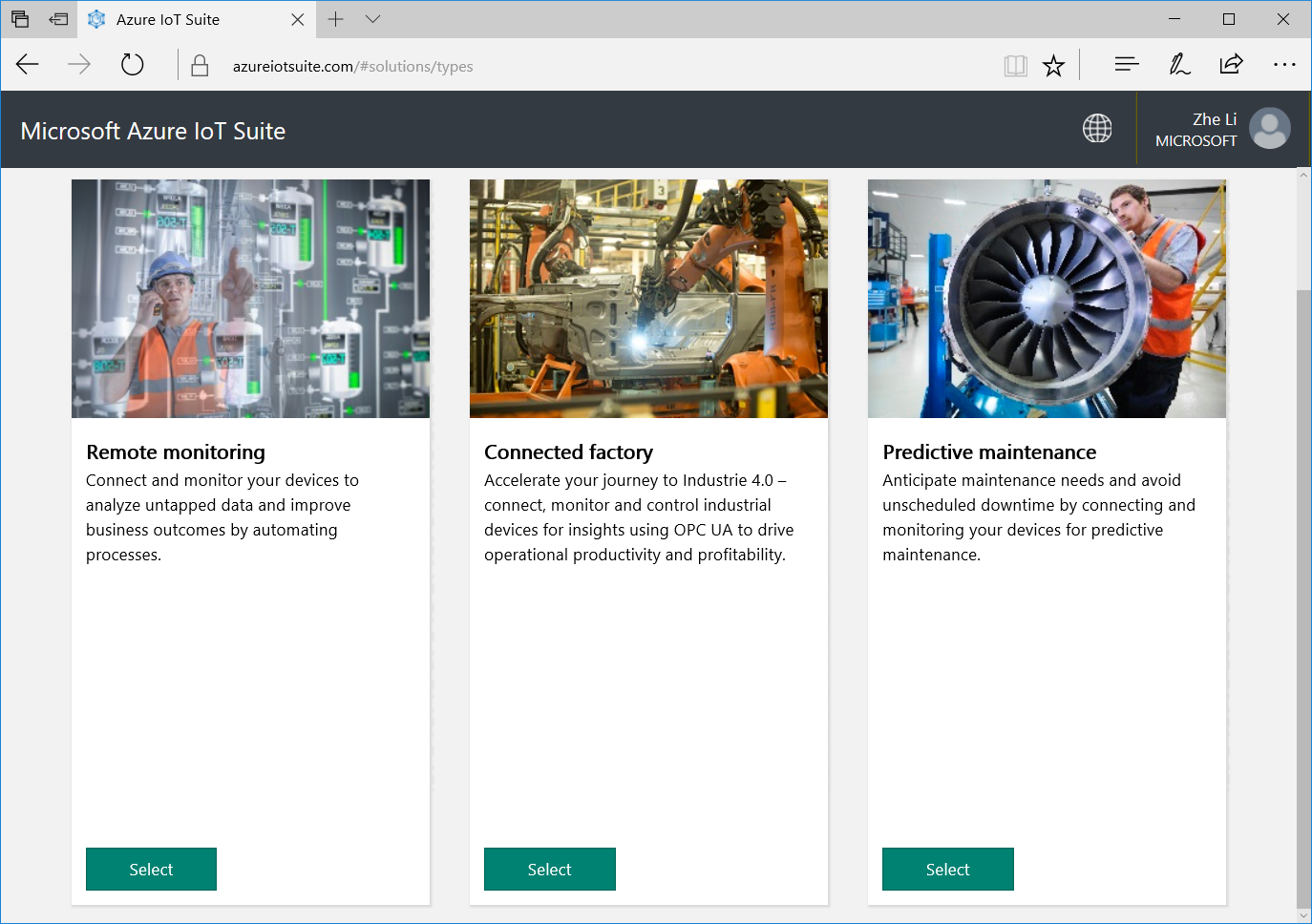
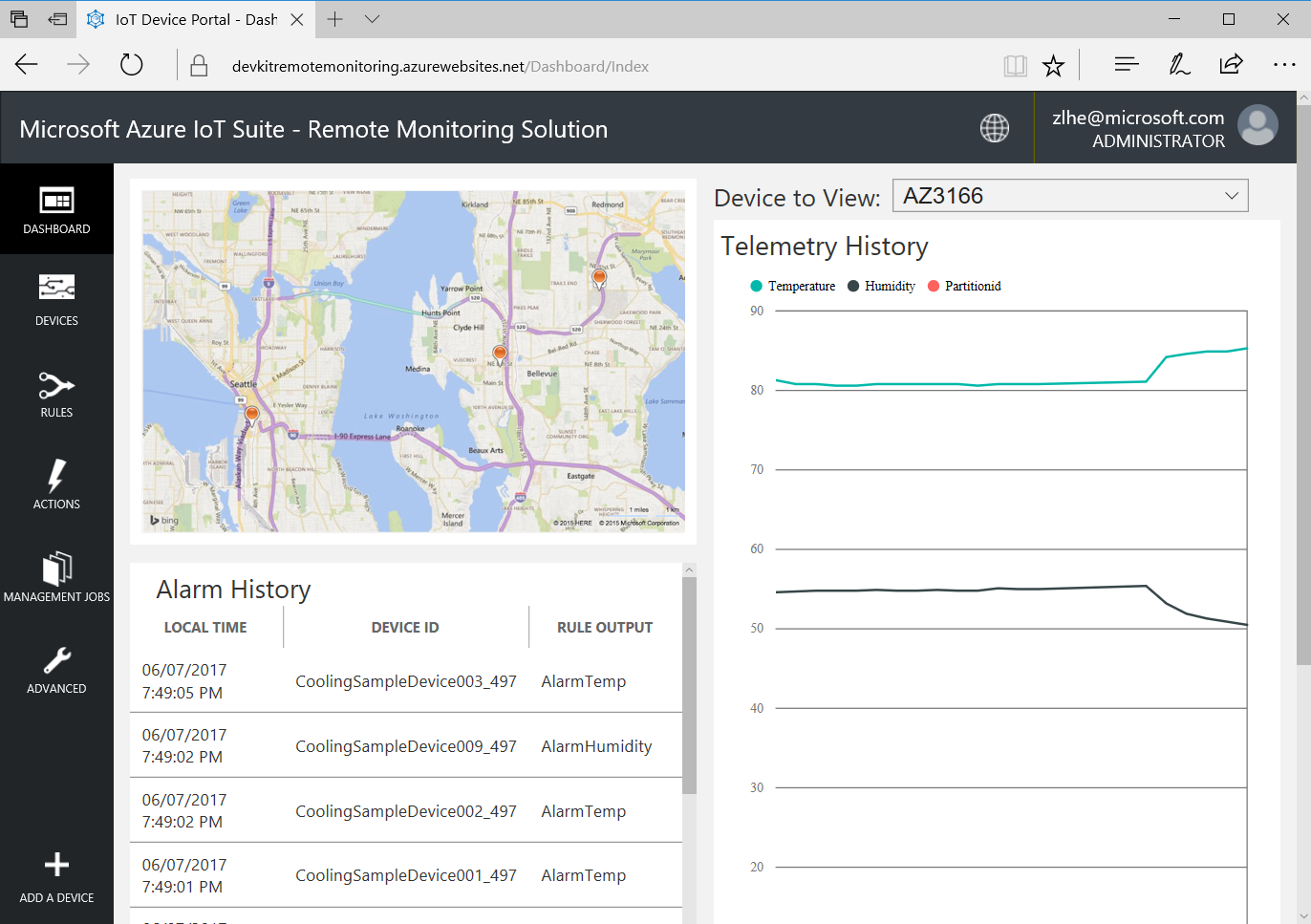
In the solution window, run your task throughCtrl+P(macOS:Cmd+P) by enteringtask cloud-provisionin the provided text box:
TheMXChip IoT DevKitis an all-in-one Arduino compatible board with rich peripherals and sensors. You can develop for it usingVisual Studio Code extension for Arduino. And it comes with a growingprojects catalogto guide you prototype Internet of Things (IoT) solutions that take advantage of Microsoft Azure services.
Make a note ofIoT Hub Hostname, and clickDone.
Enter a solution name, select a subscription and a region, and then click. The solution may take a while to be provisioned.
to load VS Code commands and select, then VS Code starts verifying and uploading the Arduino sketch:
On the Remote Monitoring solution console, you will see your DevKit sensor status.
UseCtrl+P(macOS:Cmd + P) and typetask config-device-connection.
Activate afree 30-day trial Microsoft Azure account
Create an Azure IoT Remote Monitoring solution accelerator
The terminal prompts you to enter configuration mode. To do so, hold down button A, then push and release the reset button. The screen displays the DevKit ID and Configuration.
Go to your Azure IoT Remote Monitoring solution accelerator, and clickDASHBOARD.
An active Azure subscription. If you do not have one, you can register via one of these two methods:
If you happen to close the pane, you can reopen it. UseCtrl+Shift+P(macOS:Cmd+Shift+P) to open the command palette, typeArduino, and then find and selectArduino: Examples.
If you encounter problems, refer toFAQsor reach out to us from the following channels:
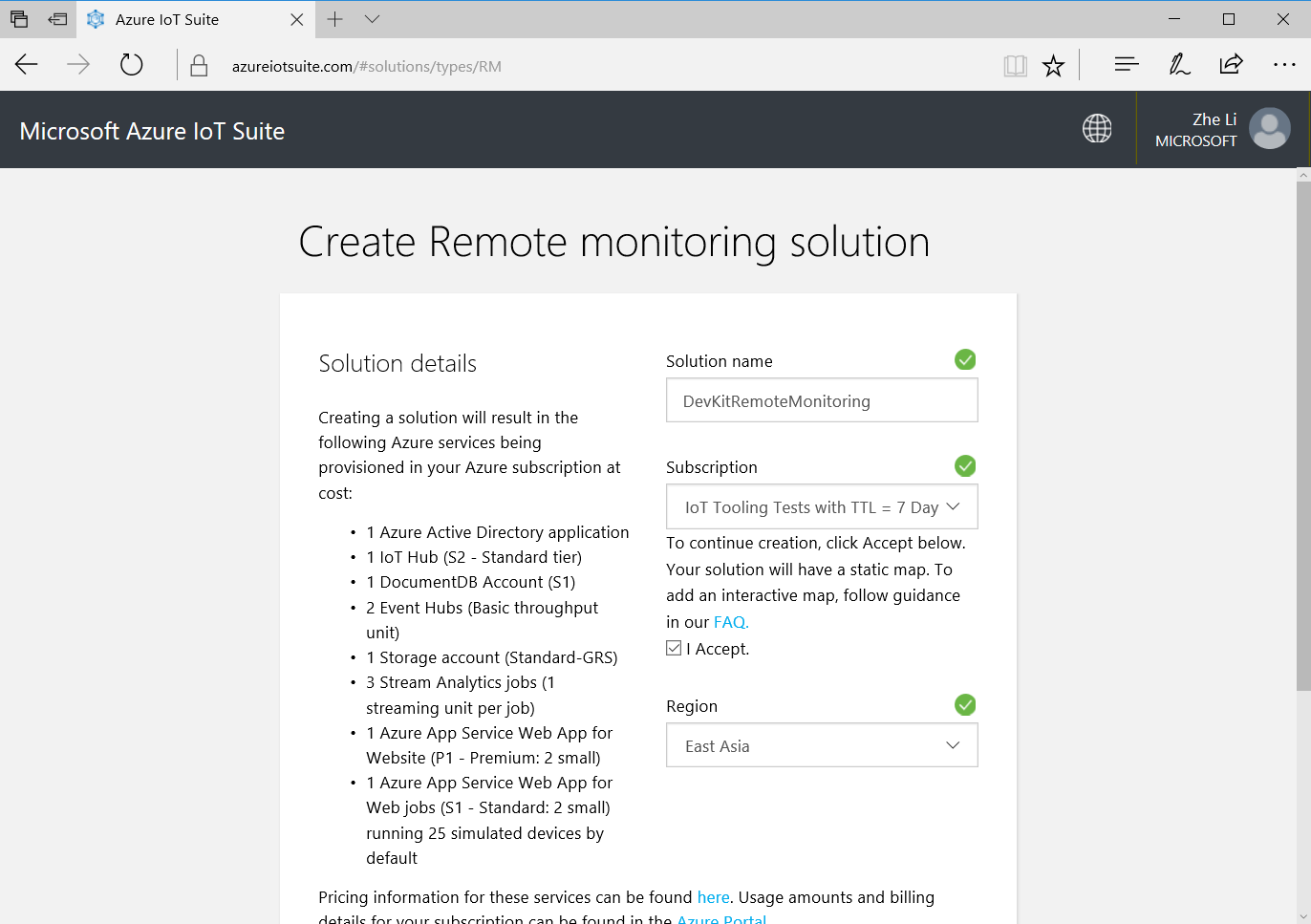
In the VS Code terminal, an interactive command line guides you through provisioning the required Azure services:
You can change the device ID in IoT Hub by followingthis guide. And if you want to change the hardcodedAZ3166to customized device ID in the code.Hereis the line of code that you can modify.
Our new feedback system is built on GitHub Issues. Read about this change inour blog post.
Go toAzure IoT solution accelerators siteand click
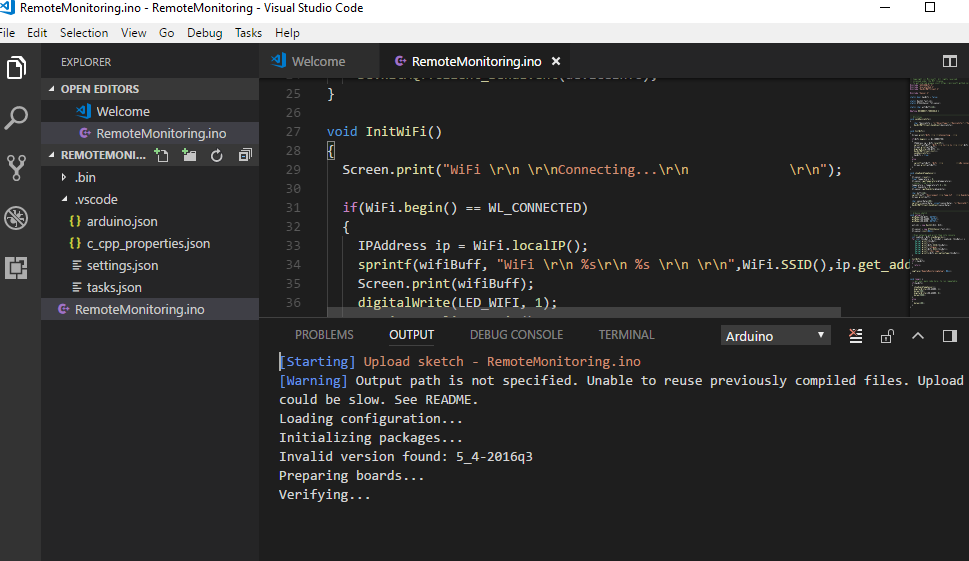
Expand left sideARDUINO EXAMPLESsection, browse toExamples for MXCHIP AZ3166 AzureIoT, and selectRemoteMonitoring. It opens a new VS Code window with a project folder in it.
The terminal asks you whether you want to use connection string that retrieves fromtask cloud-provisionstep. You could also input your own device connection string by clicking Create New…
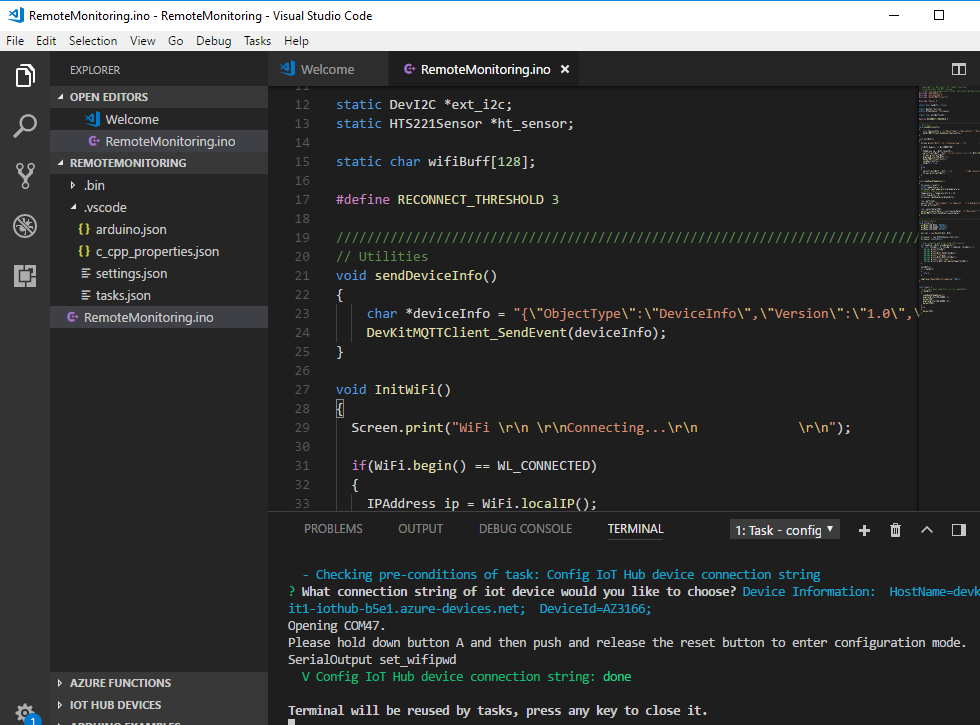
Claim yourAzure creditif you are MSDN or Visual Studio subscriber
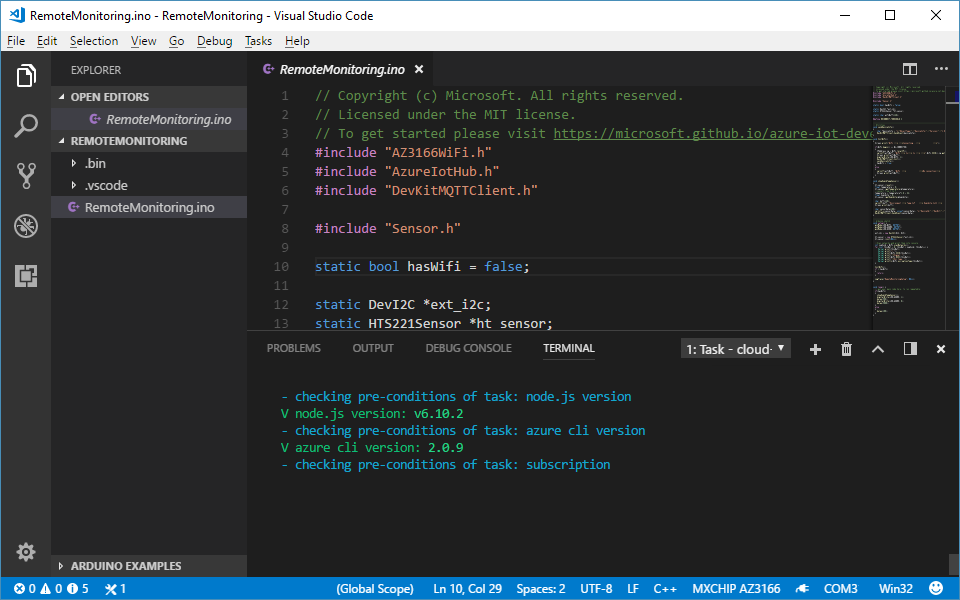
Wed love to hear your thoughts. Choose the type youd like to provide:
In this tutorial, you learn how to run a sample app on your DevKit to send sensor data to your Azure IoT Remote Monitoring solution accelerator.
After the provision is completed, click. Some simulated devices are created for the solution during the provision process. Click
Connect the DevKit to your computer. VS Code automatically detects your DevKit and opens the following pages:
